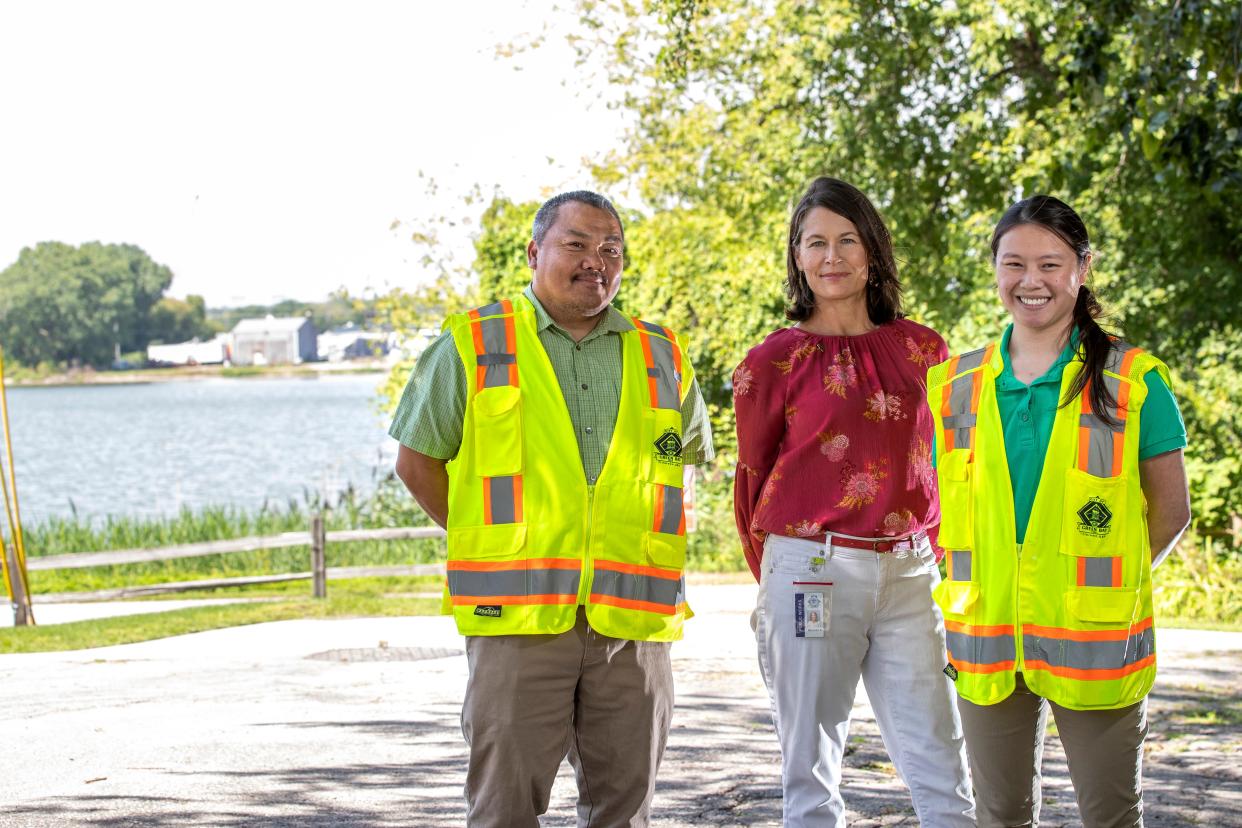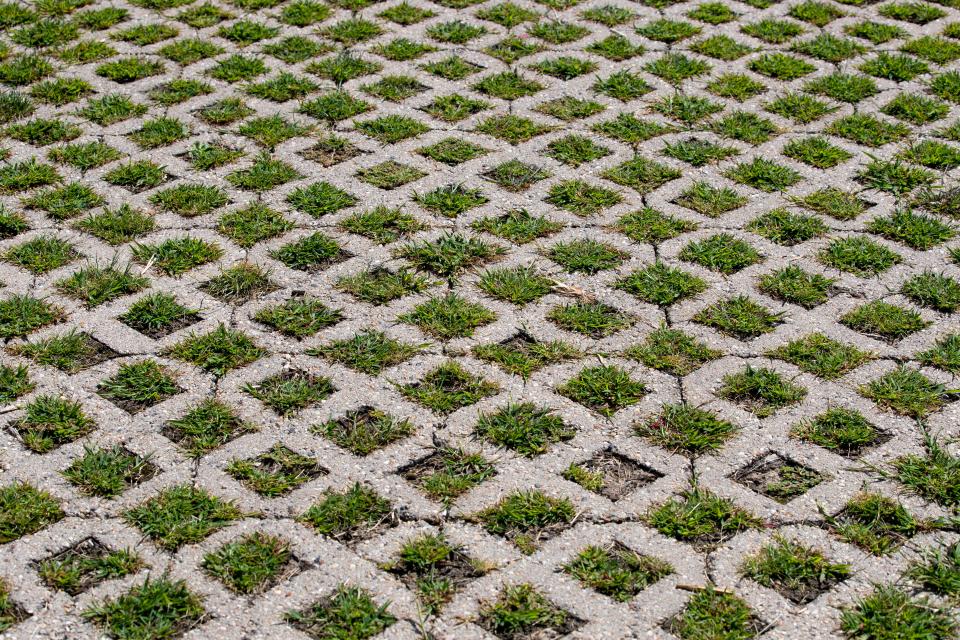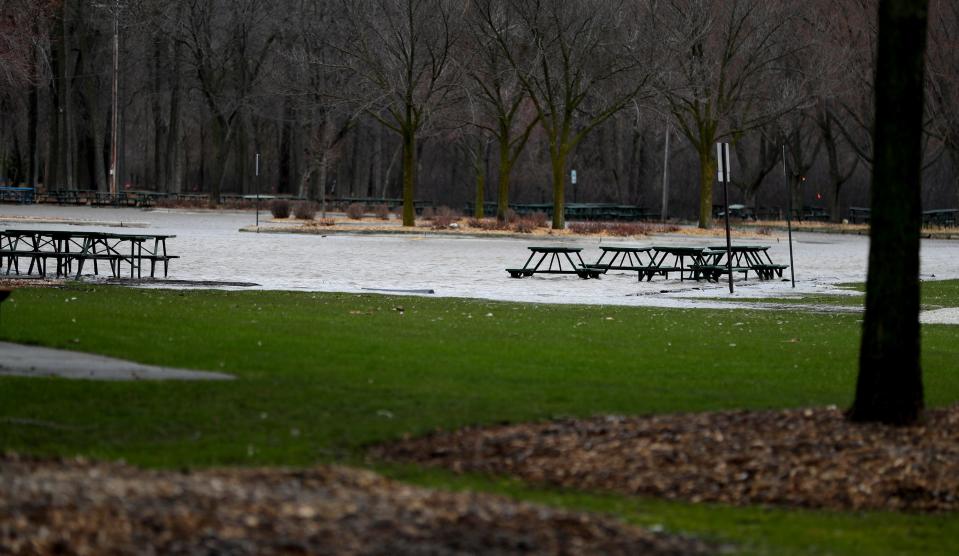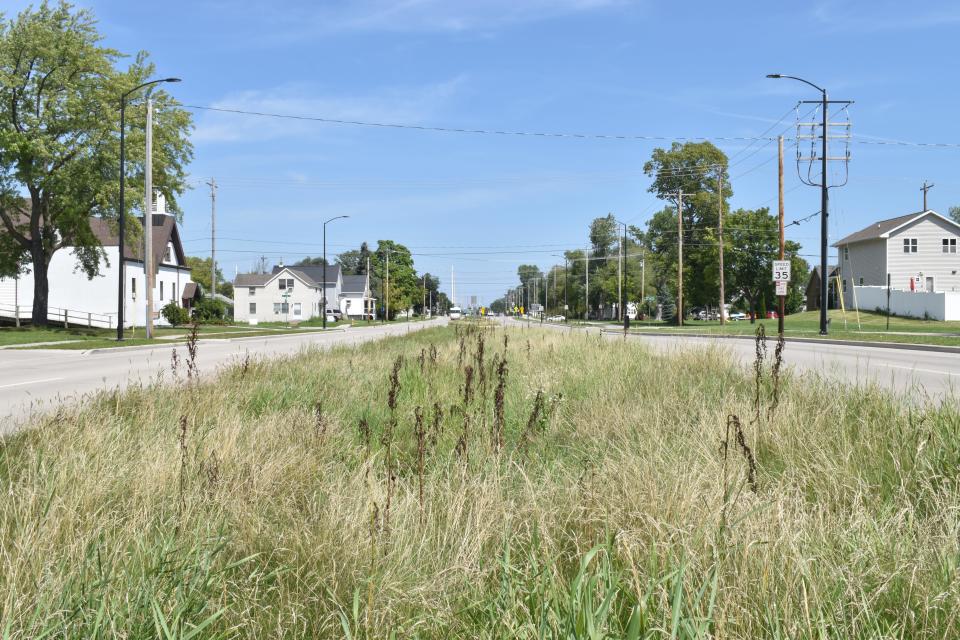Green Bay's use of 'green infrastructure' to manage stormwater runoff will grow with first permeable pavement street

GREEN BAY - This summer, the city has tackled some overdue road reconstruction and resurfacing after two years of financial stress due to the COVID-19 pandemic.
Nestled in this year's road construction is a new, environmentally friendly development: Green Bay is getting its first permeable pavement street.
Starting in September, as part of the planned reconstruction of Eliza Street from its intersection with South Monroe Avenue to the Fox River Trail, the 400 block of the street will get permeable pavement with the goals of reducing stormwater runoff and improving water quality
This is exactly what it sounds like: pavement that's designed to allow water to pass through it and be absorbed into the ground. There are three main types of permeable pavement: pervious concrete, porous asphalt, and permeable pavers, which is what the project at Eliza Street will use.
What are permeable pavers?
Permeable pavers are slabs of brick or concrete that have wider joints between them to allow water to infiltrate and drain to an underground base. In other words, they absorb and store more water — and for many are more aesthetically pleasing — than the traditional pavements in Green Bay, Wisconsin's oldest city.
Permeable pavement is just one kind of green infrastructure that is increasingly being used in lieu of — or as a complement to — aging "gray infrastructure" like gutters, pipes, and tunnels to manage stormwater runoff.
While traditional infrastructure moves stormwater to treatment plants or nearby bodies of water, green infrastructure filters and absorbs stormwater where it falls, often using the natural landscape and systems to do so.
Although other cities have been using green stormwater infrastructure for around two decades, Green Bay hasn't done much of it yet, said Melissa Schmitz, the city's resiliency coordinator.
She assumed her role with the Green Bay Public Works Department in 2020 to work on improving water quality and mitigating flooding, which could become more frequent and severe with climate change.
The Wisconsin Initiative on Climate Change Impacts found that the past decade has been the wettest on record and that the average annual precipitation has increased 17% — about 5 inches — since 1950. It is expected to continue to increase in the future, as will "very extreme" precipitation events. Both of these trends can lead to more flooding.
"Those kinds of events can overload a system very fast," Schmitz said. She explained that Green Bay's storm sewers fill up quickly during storms, which contributes to devastating floods like those in March 2019 and September 2019.
RELATED: Green Bay turns to green infrastructure to combat flooding and improve water quality
But floods aren't the only environmental issue that arises from increasing precipitation and extreme events. More rain means more water runoff into creeks, streams, rivers, and ultimately the bay. Nutrients like phosphorus hitch a ride with this water as it rolls over Wisconsin's vast agricultural land, encouraging algae growth and worsening the bay's oxygen-deprived dead zones.
How does permeable pavement help with stormwater runoff?
Despite the growing use of green infrastructure in the context of a changing climate, Green Bay City Council has been slow to adopt it. In most cases when the council has delayed action, several council members have cited concerns about the cost-effectiveness of it and a lack of data proving its efficacy.
The demonstration project at Eliza Street could provide that proof, at least for permeable pavement.
Schmitz said the area around the project site is like a "mini-watershed," which is a land area that channels rainfall and snowmelt into the bay via creeks, streams, and rivers. Preliminary modeling showed the permeable pavers would reduce annual stormwater runoff by 61% and phosphates by 90%, she said.
Public Works will use an $85,000 grant from the Fund for Lake Michigan for the Eliza Street project. Green Bay's Stormwater Utility will provide $5,000 to install informational signs near the Fox River Trail where the permeable pavers will be.
"It's a capacity-building grant," Schmitz said.
She explained that it will be a opportunity for Green Bay's civil engineers to learn more about how to incorporate green infrastructure into engineering designs. It will also provide a framework for how to replicate permeable pavement across the city.
She added that not every street meets the necessary criteria for permeable pavement. Monroe Avenue, for example, is too high-traffic for permeable pavement, which has a lower load-bearing capacity.

Permeable pavement a welcome addition for Green Bay residents
Jeanette and Paul Dufeck, a retired couple who has owned property near the Eliza Street project site since 1989, say the permeable pavement coming soon will be a welcome addition to the neighborhood.
"I'm very excited they're redoing our street ... it's so bad," Jeanette said. "When I heard about this permeable pavement, I was very excited, because, if you look at our driveway, we have that."
The Dufecks moved to their property, abutting the Fox River trail at the east end of Eliza Street, about 20 years ago. During that time, they learned that all the rainfall and snowmelt from Madison and Monroe streets flows to their property, often washing out a corner of their lawn.
Knowing that their property was vulnerable to significant water runoff, they opted for lattice-style permeable pavers on their driveway, when they replaced it shortly after moving to the home.
By letting greenery grow through, this kind of driveway allows for more water to soak into the soil and reduces runoff. Because of the benefits they've seen from the driveway, they're looking forward to even more permeable pavement nearby.
"We think that permeable pavement is just fabulous," Jeanette said, adding that they used it on their driveway to be able to continue enjoying their prime location.
"Why wouldn't you want to live on the trail and the river? It doesn't get much better than that."

Some other green infastructure projects in Green Bay
Although this is the first street in Green Bay to get permeable pavement, there are a couple municipal projects that have already used it: Bay Beach Amusement Park's parking lot and CityDeck along the Fox River downtown.
Another example of green infrastructure in Green Bay are the vegetated swales in the North Webster Avenue median north of University Avenue. The swales use native vegetation to slow the flow of stormwater and increase the uptake of water into the soil.
In February, the City Council approved a rain barrel pilot program for this summer. The program provided free rain barrels to Green Bay residents interested in harvesting rainwater to use later for watering plants, lawns and gardens. Doing so reduces stormwater runoff and improves water quality.
Due to the overwhelming response of residents who registered to receive a rain barrel, Public Works had to close registration the day after it opened.
Green infrastructure is also a key component of the nearly $9 million first phase of the shipyard redevelopment project that broke ground in July north of West Mason Street on the Fox River. Green Bay has received an EPA grant of about $565,000 to fund green infrastructure for stormwater management at the site.
In addition to these projects, Schmitz said she is working to amend Green Bay's municipal codes to eliminate barriers to developing additional green infrastructure.
This is an effort that's been underway, or completed, in many other Wisconsin municipalities like Superior, Manitowoc, Sheboygan, and Port Washington, according to Julia Noordyk, the water quality and coastal communities specialist at Wisconsin Sea Grant.
Noordyk — who also serves on Green Bay's Sustainability Commission — developed a workbook to help communities update their local codes and ordinances to allow for and promote green infrastructure. She said a lot of older stormwater ordinances can have conflicting elements, often prohibiting the development of green infrastructure. Sometimes, just the absence of language of green infrastructure can be prohibitive, she said.
"Green infrastructure is a really important tool for climate resilience," Noordyk said.

Madison is another Wisconsin city experimenting with more green infrastructure projects
In Madison, the city been experimenting with green infrastructure through a pilot study in an area with about 600 homes, according to Paul Gaebler, a water resources engineer for the city. The study is monitoring the cumulative impacts of green infrastructure installed in the area, including three streets with different kinds of permeable pavement, to see how they hold up
Paul Gaebler, a water resources engineer for the city of Madison, said it's too soon to see a statistically significant change in the amount of runoff in the watershed as a whole from the green infrastructure. But when he goes outside during smaller rainstorms (a quarter-inch to half-inch of rain), he can see that the infrastructure is "functioning as designed" and "all of the water is going in the ground."
"When you look at green infrastructure, I think it's important to kind of manage expectations," he said.
Green infrastructure is really good at managing the small storms and reducing runoff pollution from them. However, they don't entirely fix that problem with bigger storms. For those, traditional stormwater management is still needed to move large amounts of water safely through the city.
"It's not like one is the silver bullet solution to all of our problems," Gaebler said. "But they can work together in concert really well."
He said green infrastructure — like any infrastructure — also requires maintenance, but that maintenance can look quite different. Permeable pavement, for example, needs to be regularly vacuumed to remove sediment buildup and allow water to continue to pass through it.
Madison is reimbursing residents in the study area for green infrastructure they install on private property. Schmitz said she is working to develop a revolving loan fund for businesses and residents to do the same in Green Bay.
Madison also has a separate initiative to provide funding and assistance to help private property owners build their own rain gardens, which are depressed areas planted with grasses and perennial flowers that reduce runoff. A similar incentive program for rain gardens is also in the works for Green Bay, Schmitz said.
Green infrastructure can be used besides stormwater management
Schmitz, Gaebler, and Noordyk all said that in addition to the obvious benefits green infrastructure has for stormwater management, there are others: water quality improvements, reduced heat island effect, improved habitat for pollinators, and the many social, mental, and economic benefits that come from increased green space in a community, to name a few. The EPA highlights even more benefits of green infrastructure.
These benefits make green infrastructure more cost-effective in the long term, Schmitz said, despite often being more expensive to initially implement. Many studies and tools have backed that up.
Construction costs vary from project to project, but permeable pavement, for example, can cost around 14% more than conventional surfacing according to a green infrastructure cost calculator, she said.
According to Schmitz, this is why it's important to explain to people: "If it costs more, what are the extra benefits you’re getting?"
Contact Kelly Smits at (920) 431-3632 or ksmits@gannett.com. Follow her on Twitter at @kellymsmits.
This article originally appeared on Green Bay Press-Gazette: Green Bay's first permeable pavement street will reduce water runoff

